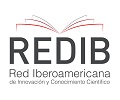Epidemiology and effects of gastrointestinal nematodes on beef cattle heifers in the semiarid Chaco region of Salta.
DOI:
https://doi.org/10.14409/favecv.v17i1.7222Keywords:
cattle, gastrointestinal nematodes, epidemiology, semiarid Chaco RegionAbstract
The aim of this study was to determine the epidemiology and the effects of gastrointestinal nematodes (GIN) on beef cattle heifers in the Chaco Semiarid region of Salta, Northwestern Argentina. In March 2016 sixty heifer calves were divided in three groups of twenty each: MXDG, calves treated with moxidectin (200 μg/kg) every 45 days, IVMG: calves treated once at the beginning of the trial with ivermectin LA (630 μg/kg) and CONG: untreated control calves. Faecal egg counts (FEC) and faecal cultures were performed every 45 days. Live weight gain (LWG) was recorded at each sampling time. The average FEC at the beginning of the trial was low ( =102±77) for all groups. For the CONG the FEC peaked towards mid-winter ( =1049±1040), and mid-spring ( =667±928) and to decrease toward the end of the trial. FEC for IVMG only decreases partially (37.3%) post-treatment, while for MXDG showed always negligible values. The predominant genera were Haemonchus (47.1%) and Cooperia (45.9%). The moxidectin treatment effect was evident from late autumn onwards, the MXDG showed significant (p<0.04) higher LWG than the other two groups in late winter. At the end of the trial, the MXDG average total LWG (146.5 kg) was significantly (p<0.008) higher than those of IVMG (111.0 kg) and CONG (105.2 kg). The results of this study show a mid-winter peak in FEC, Haemonchus and Cooperia as predominant worms and a negative effect of GIN on beef heifer calves LWG.
Downloads
Published
How to Cite
Issue
Section
License
FAVE Sección Ciencias Veterinarias ratifies the open access model, in which contents (in full) are available free to anyone in the internet. The costs of production and publication are not transfered to the authors. This policy intends to break social and economical barriers that generate inequities in the access to information, and for the publication of research results.
All articles can be accessed at http://bibliotecavirtual.unl.edu.ar/publicaciones/index.php/FAVEveterinaria/issue/current/, under license Creative CommonsAtribución-NoComercial-Compartir Igual 4.0 Internacional.










